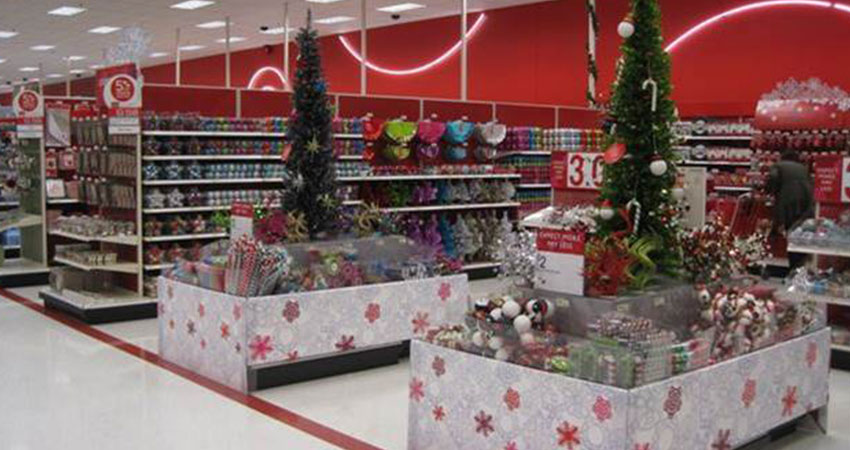Retail bellwether Target melted the holiday season joy over record holiday ecommerce spending of $142.5 billion, reporting disappointing holiday sales in November and December as toys and electronics underperformed and the company lowered Q4 comparable sales guidance.
Target’s comps in the two-month holiday period grew just 1.4%, down from 5.7% comp growth in 2018, but ecommerce was a bright spot, up 19%.
Sales of electronics, a marquee holiday category, were down 6%. Sales of toys were flat, despite Target’s store-within-a-story partnership with Disney and other efforts to capitalize on the void left by Toys R Us. Still, Target said it continued to gain share in toys during the holiday season, based on data from the NPD Group.
Portions of home goods also showed softer than predicted sales, with the category down 1% in November and December. Home, toys and electronics represent approximately one-third of Target’s holiday season sales.
“Because these categories account for a much higher portion of sales during the holidays, they have a larger impact on our overall sales growth as compared to the rest of the year,” Target Chairman and CEO Brian Cornell said in a release on results. “At the same time, we’ve seen continued strength and market share gains in apparel, beauty, essentials and food and beverage. And in toys, despite approximately flat comparable sales, we continued to gain share over the holidays, according to data from the NPD group.”
Comparable sales for apparel were up 5%, and sales for essentials and beauty were up 6%.
“After three strong quarters this year and a record-breaking holiday season in 2018, we had some really ambitious plans heading into the season,” Cornell added in a separate website blog post. “While we knew this season was going be challenging, it was even more challenging than we expected. On the topline, our comparable sales grew 1.4%, reflecting 19% growth in digital, which was below our guidance, a tough miss considering how hard our team worked all season long.”
The 19% growth in comparable ecommerce was driven primarily by Target’s same-day fulfillment services (curbside pickup and Shipt delivery), which grew more than 50% combined over November and December 2018, representing the one true bright spot for Target.
Cornell noted in his blog post that stores fulfilled more than 80% of ecommerce orders over the holiday season.
Despite holiday sales falling below expectations, Target maintained its previous guidance for fourth quarter earnings per share and said Q4 is tracking to be the 11th straight quarter of comparable sales growth. The fourth quarter runs through January.
“We also remain on track to deliver historically strong full-year results in 2019, including comparable sales growth of more than 3% and record-high EPS reflecting mid-teens growth compared with last year,” Cornell said.
Target expects Q4 2019 comparable sales growth to fall in line with the 1.4% performance during the holidays, down from prior guidance of 3% to 4% growth.
In November, Target and Walmart were projected as the most likely holiday shopping winners. Walmart reports its holiday season results next month, and analysts at Morgan Stanley are lowering expectations based on Target’s results.
The Wall Street Journal reported that NPD Group said overall holiday results for retail and ecommerce were lackluster, estimating comparable sales growth of just 0.2%.

